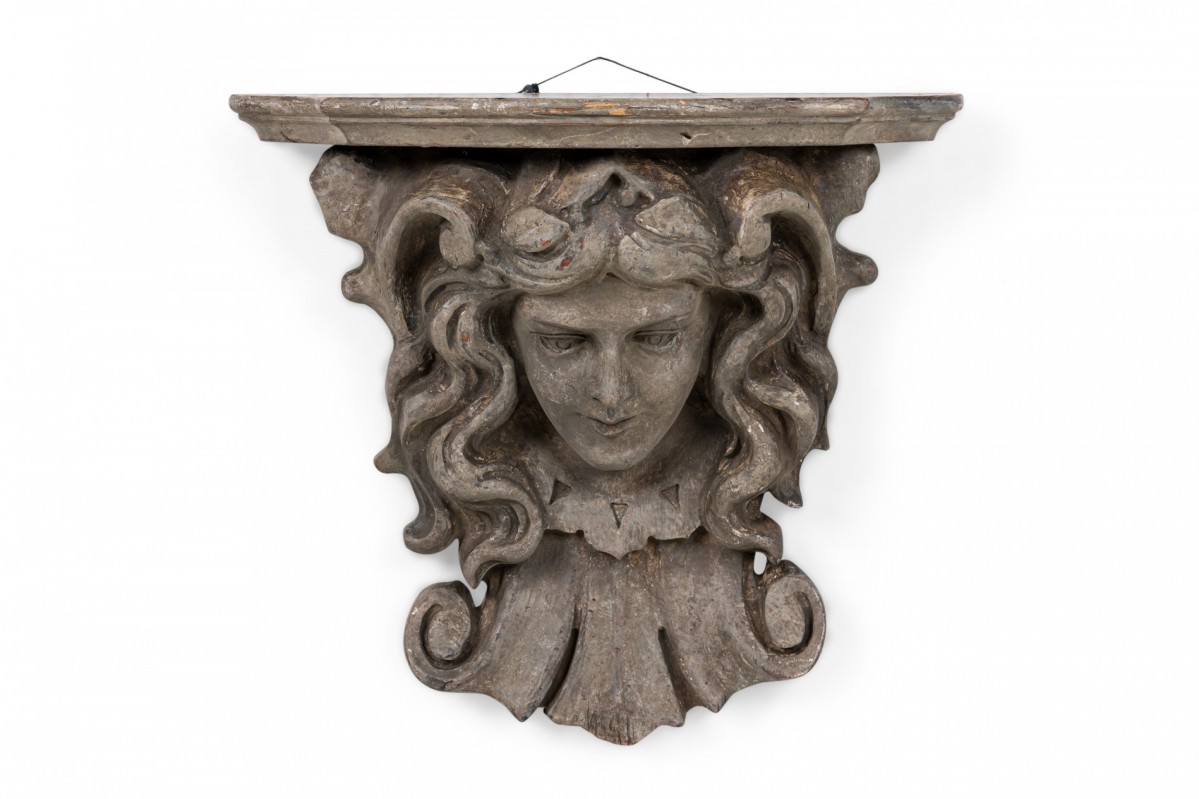X
{{ modalTitle }}
PLEASE FILL IN THE REQUIRED FIELDS.X
X
{{ modalTitle }}
Choose one of the options below.X
ITEM SUCCESSFULLY
ADDED TO PROJECT
Pair of Italian Neoclassic Style Terra-Cotta Ornaments
 Italian
Italian Neo-classic
Neo-classic Accessories/Décor/Bric-a-Brac
Accessories/Décor/Bric-a-Brac Tchotchkes/Ornaments
Tchotchkes/Ornaments
Newel Warehouse
32-00 Skillman Ave
Long Island City NY - 11101
 (212) 758-1970
(212) 758-1970
Pair of Italian Neoclassic Style Terra-Cotta Ornaments

Newel Warehouse
32-00 Skillman Ave
Long Island City NY - 11101
 (212) 758-1970
(212) 758-1970
 Accessories/Décor/Bric-a-Brac
Accessories/Décor/Bric-a-Brac Tchotchkes/Ornaments
Tchotchkes/OrnamentsNeo-classic
Neo-classic refers to the second revival of classic design for interior decoration in the 18th century. This style was inspired by excavations of Pompeii and Herculaneum that begun in 1738. Common motifs include dolphins, lyres, and urns.
Finial
An ornamental, terminating piece that extends vertically from the apex of a design. In architecture, they are found at the tips of gables or spires, and in furniture, as top ornaments on cabinet corners, posts, or supports. Finial also refers to the decorative metal piece used to affix lampshades to table and floor lamps. They often take the shape of a ball, flame, flower, acorn, pineapple, or vase.
Fleur-de-lis
A decorative symbol patterned after a stylized lily or English iris comprised of three petals bound at their base. Historically, it has been used as a royal symbol (primarily in France) and appears on many a royal crest and coat of arms. It has also been used as a symbol of Catholic saints, primarily the Virgin Mary and St. Joseph, who are both closely associated with the lily.
Neo-classic
Neo-classic refers to the second revival of classic design for interior decoration in the 18th century. This style was inspired by excavations of Pompeii and Herculaneum that begun in 1738. Common motifs include dolphins, lyres, and urns.
Finial
An ornamental, terminating piece that extends vertically from the apex of a design. In architecture, they are found at the tips of gables or spires, and in furniture, as top ornaments on cabinet corners, posts, or supports. Finial also refers to the decorative metal piece used to affix lampshades to table and floor lamps. They often take the shape of a ball, flame, flower, acorn, pineapple, or vase.
Fleur-de-lis
A decorative symbol patterned after a stylized lily or English iris comprised of three petals bound at their base. Historically, it has been used as a royal symbol (primarily in France) and appears on many a royal crest and coat of arms. It has also been used as a symbol of Catholic saints, primarily the Virgin Mary and St. Joseph, who are both closely associated with the lily.
Neo-classic
Neo-classic refers to the second revival of classic design for interior decoration in the 18th century. This style was inspired by excavations of Pompeii and Herculaneum that begun in 1738. Common motifs include dolphins, lyres, and urns.
Finial
An ornamental, terminating piece that extends vertically from the apex of a design. In architecture, they are found at the tips of gables or spires, and in furniture, as top ornaments on cabinet corners, posts, or supports. Finial also refers to the decorative metal piece used to affix lampshades to table and floor lamps. They often take the shape of a ball, flame, flower, acorn, pineapple, or vase.
Fleur-de-lis
A decorative symbol patterned after a stylized lily or English iris comprised of three petals bound at their base. Historically, it has been used as a royal symbol (primarily in France) and appears on many a royal crest and coat of arms. It has also been used as a symbol of Catholic saints, primarily the Virgin Mary and St. Joseph, who are both closely associated with the lily.













